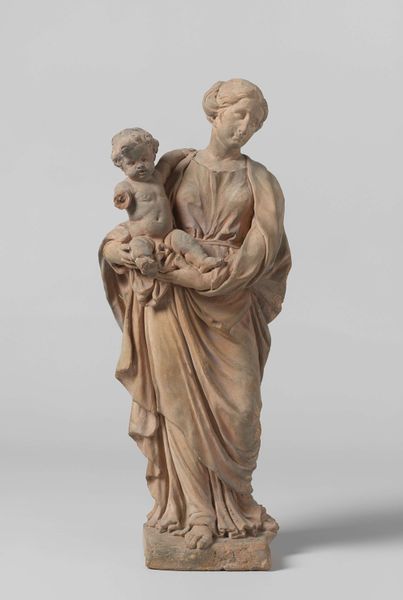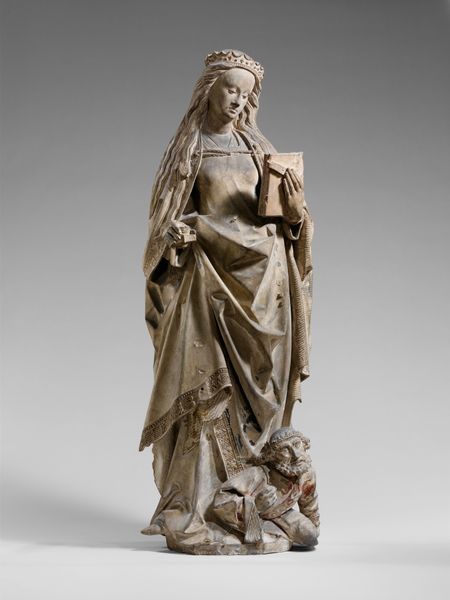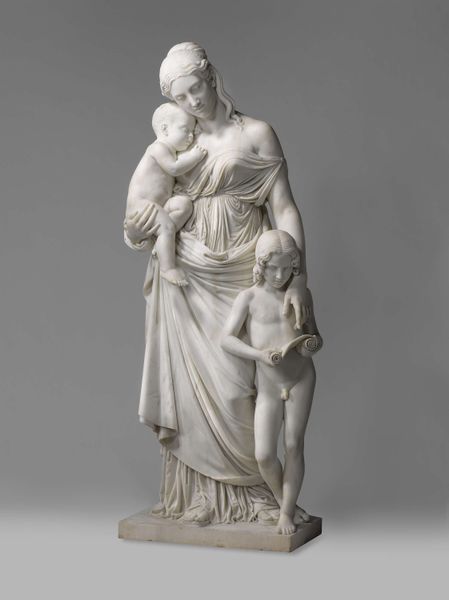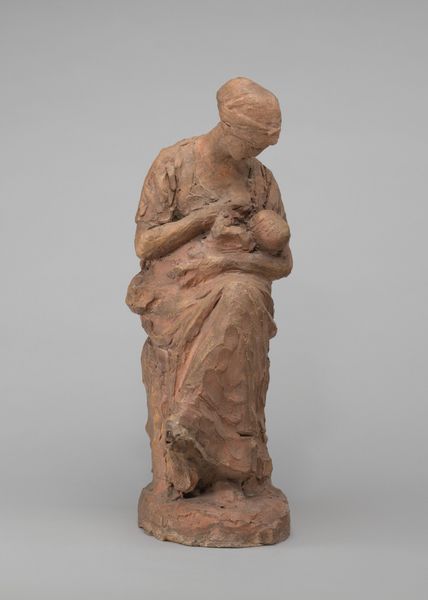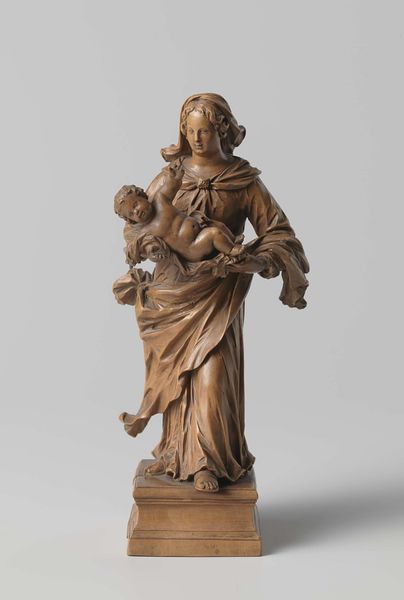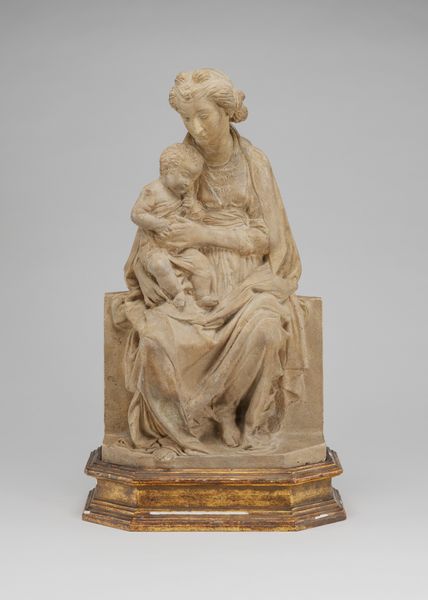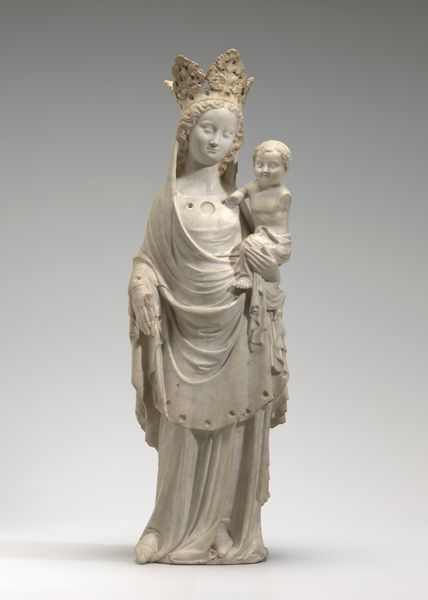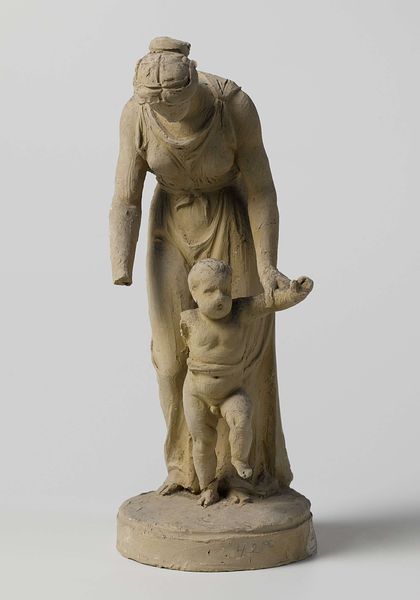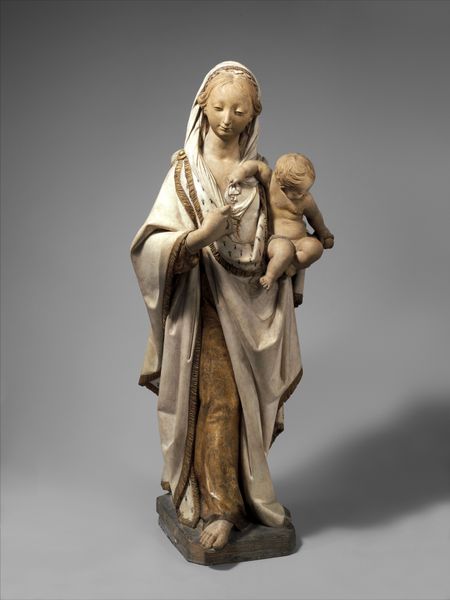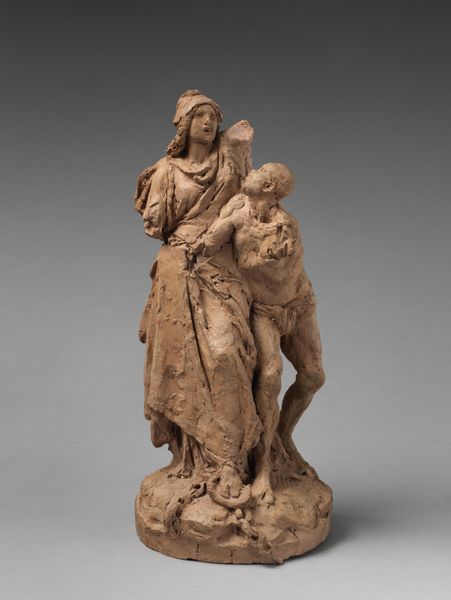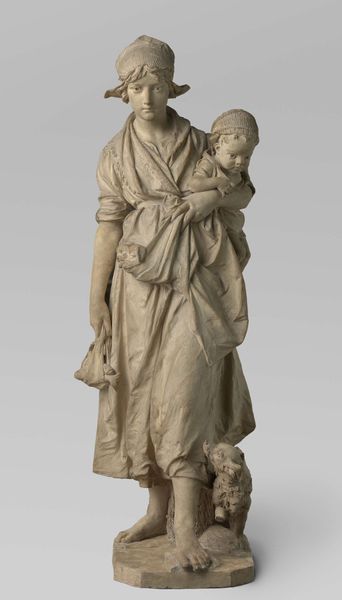
ceramic, sculpture, terracotta
#
portrait
#
mother
#
sculpture
#
ceramic
#
figuration
#
sculpture
#
terracotta
#
decorative-art
Dimensions: confirmed: 9 13/16 × 4 × 3 5/8 in. (24.9 × 10.2 × 9.2 cm)
Copyright: Public Domain
Editor: This is Bartolomeo Pinelli's terracotta sculpture, "Mother and Child," from 1812, housed right here at the Met. I’m immediately struck by the texture of the clay and how that contributes to a feeling of… tenderness, almost fragility. What stands out to you? Curator: I find the piece intriguing from a formalist perspective. Note how Pinelli employs the vertical axis, establishing a clear hierarchy. The mother's form acts as a structural pillar, and all attention is given to the contours and implied lines that give shape to their relationship. Editor: Could you expand on the importance of the vertical axis? Curator: Certainly. By emphasizing height, Pinelli evokes feelings of strength and stoicism through his simplification of forms. Note that he models texture through implied drapery, juxtaposing the simple rendering of the mother’s robes against the delicate folds and texture defining her hair. Doesn't that contrast invite interpretation? Editor: It does. The textural contrast creates tension, almost like opposing forces within a single form. Is the weight and lack of color also relevant? Curator: Precisely. The medium of terracotta and limited color palette contributes to a sense of solemnity and austerity, underscoring the gravity of the mother’s role and their timeless pose. Do you agree that her positioning as support is key? Editor: Absolutely. It suggests she is everything, physically and metaphorically holding her family. I never noticed all that the form alone could tell. Thank you. Curator: A valuable exchange. Formal qualities offer such unique insights.
Comments
No comments
Be the first to comment and join the conversation on the ultimate creative platform.
